My #KidLit #PoweredByIndie Story + Self-Publishing Advice
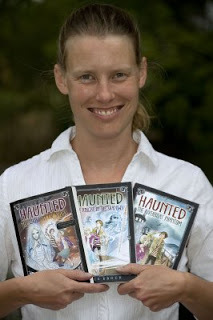 I’m not exactly an outsider to traditional publishing. I’ve had 50 children’s books traditionally published, some work for hire and some original fiction, with 10 more currently under contract. But several years ago, negative trends in traditional publishing (lower advances, poor e-book royalty rates, reduced marketing) met the increased ease of self-publishing through ebooks and print on demand. I weighed the pros and cons (there are many of each) and decided to explore self-publishing myself.
I’m not exactly an outsider to traditional publishing. I’ve had 50 children’s books traditionally published, some work for hire and some original fiction, with 10 more currently under contract. But several years ago, negative trends in traditional publishing (lower advances, poor e-book royalty rates, reduced marketing) met the increased ease of self-publishing through ebooks and print on demand. I weighed the pros and cons (there are many of each) and decided to explore self-publishing myself. For the Children
Most of the indie publishing success stories involve those writing adult genre fiction. Young adult novels – aimed at teenagers with crossover potential for adult readership – have had indie success (e.g. Amanda Hocking). However, authors writing for younger children face more challenges.
Print is still king for kids, and print is more expensive to produce. Younger kids are less likely to have their own e-readers, though that is changing quickly. Some schools are also transitioning toward giving upper elementary and middle school children laptops or e-readers for classroom use. (As a curious side effect, some kids prefer print books for pleasure reading, because electronic devices now seem like part of school.)
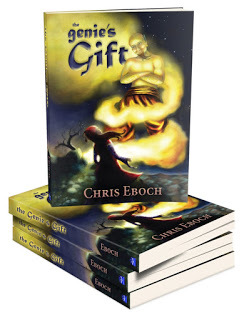 As more children get access to e-readers, electronic book sales will grow. However, so far, my children’s books sales are primarily in print on demand. The balance may shift someday – but I haven’t seen any sign of it yet. You could hold onto your work, waiting for that future, but keeping your rights has to be balanced against starting to build a fan base now through traditional publishing (and maybe getting some advance money so you can afford the time to write more books).
As more children get access to e-readers, electronic book sales will grow. However, so far, my children’s books sales are primarily in print on demand. The balance may shift someday – but I haven’t seen any sign of it yet. You could hold onto your work, waiting for that future, but keeping your rights has to be balanced against starting to build a fan base now through traditional publishing (and maybe getting some advance money so you can afford the time to write more books).
Reaching Young Readers
Reaching child readers is another challenge. Children’s book publishing depends largely on school and library sales. Librarians and teachers often turn to review journals for guidance, and schools are restricted in how they can order classroom books. A good contract with a traditional publisher that can get your book into schools and libraries definitely has its advantages.
Illustrated books face additional challenges. Print on demand costs skyrocket for books with color interior illustrations. Even with novels, children’s books are more likely to need illustrated covers rather than cheaper covers using stock photography.
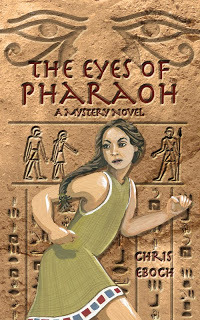 Despite the challenges, many children’s book writers are interested in indie publishing. After all, it’s better to be ahead of the wave than behind it. And at least writers whose work isn’t trendy or who get dumped by their publishers have another option now.
Despite the challenges, many children’s book writers are interested in indie publishing. After all, it’s better to be ahead of the wave than behind it. And at least writers whose work isn’t trendy or who get dumped by their publishers have another option now.In particular, indie publishing provides opportunities for books that may not otherwise find an audience. I had a middle grade (ages 9 to 12) mystery set in ancient Egypt. The story had gotten great feedback from publishers, along with either “Historical fiction isn’t selling well” or “We already have an Egypt book.” And yet several teachers told me they wished I’d get the book published, so they could use it in the classroom. I sensed a market that publishers weren’t recognizing, and I had a manuscript I loved. Thus, I brought out The Eyes of Pharaoh in POD and e-book versions.
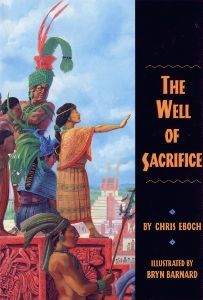 My first traditionally published novel, an adventure set in ninth-century Mayan Guatemala called
The Well of Sacrifice
, is used in many schools when they teach the Maya in fourth grade. I’ve had contact with some of those teachers, so I let them know about the new book. One e-mailed back that she’d ordered six copies for her lit circles. If teachers find that The Eyes of Pharaoh works well in the classroom, they’ll tell others, so this book could gain popularity slowly, by word of mouth.
My first traditionally published novel, an adventure set in ninth-century Mayan Guatemala called
The Well of Sacrifice
, is used in many schools when they teach the Maya in fourth grade. I’ve had contact with some of those teachers, so I let them know about the new book. One e-mailed back that she’d ordered six copies for her lit circles. If teachers find that The Eyes of Pharaoh works well in the classroom, they’ll tell others, so this book could gain popularity slowly, by word of mouth. Plus, many kids love ancient Egypt. If they go looking for books on the subject, they might find mine. There are a few other Egypt novels out there, but the niche isn’t as crowded as, say, fantasy novels. If you have something unusual that appeals to a small market segment (perhaps too small to attract a big publisher), self-publishing is a valuable option.
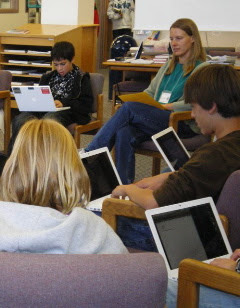 Self-publishing isn’t for everyone, but it can be a great option for those who like to control every aspect of their business. More than anything, I’ve enjoyed feeling like I have control of my career again. No waiting six months or more to hear back from an editor, or years to see a book in print. No suffering from the whims of the marketing department or falling victim to power plays at the publisher. No one to blame for setbacks but myself!
Self-publishing isn’t for everyone, but it can be a great option for those who like to control every aspect of their business. More than anything, I’ve enjoyed feeling like I have control of my career again. No waiting six months or more to hear back from an editor, or years to see a book in print. No suffering from the whims of the marketing department or falling victim to power plays at the publisher. No one to blame for setbacks but myself! If you’re looking for quick fame and riches, you might as well play the lottery – it’s probably cheaper and your chance of success is nearly as good. But if you’re willing to work hard and plan for the future, self-publishing could be part of your business. Plus, if you have a book that doesn’t fit market trends, but may still find an enthusiastic (even if small) audience, you can bring the book out yourself. Knowing your work is being read – and dare I say loved? – is the best reward.
Stop by my blog post on the “Indie Publishing Worksheet” with questions to help you decide whether or not self-publishing is right for you, and if so, what steps to take.
 Chris Eboch is the author of nonfiction and fiction for children, early reader through teen. Her novels for ages nine and up include The Eyes of Pharaoh, a mystery in ancient Egypt; The Well of Sacrifice, a Mayan adventure; The Genie’s Gift, a middle eastern fantasy; and the Haunted series, about kids who travel with a ghost hunter TV show, which starts with The Ghost on the Stairs. Her writing craft books include You Can Write for Children: How to Write Great Stories, Articles, and Books for Kids and Teenagers, and Advanced Plotting.
Chris Eboch is the author of nonfiction and fiction for children, early reader through teen. Her novels for ages nine and up include The Eyes of Pharaoh, a mystery in ancient Egypt; The Well of Sacrifice, a Mayan adventure; The Genie’s Gift, a middle eastern fantasy; and the Haunted series, about kids who travel with a ghost hunter TV show, which starts with The Ghost on the Stairs. Her writing craft books include You Can Write for Children: How to Write Great Stories, Articles, and Books for Kids and Teenagers, and Advanced Plotting.Learn more at https://chriseboch.com/or her Amazon page.
 Chris also writes for adults under the name Kris Bock. Kris Bock writes action-packed romantic suspense involving outdoor adventures amidst Southwestern landscapes. The Mad Monk’s Treasure follows a treasure hunt in New Mexico. Whispers in the Dark involves intrigue among ancient Southwest ruins. Counterfeitsstarts a series about art theft. What We Found is a mystery with romantic elements about a young woman who finds a murder victim in the woods. Read excerpts at www.krisbock.comor visit her Amazon page.
Chris also writes for adults under the name Kris Bock. Kris Bock writes action-packed romantic suspense involving outdoor adventures amidst Southwestern landscapes. The Mad Monk’s Treasure follows a treasure hunt in New Mexico. Whispers in the Dark involves intrigue among ancient Southwest ruins. Counterfeitsstarts a series about art theft. What We Found is a mystery with romantic elements about a young woman who finds a murder victim in the woods. Read excerpts at www.krisbock.comor visit her Amazon page.
Published on October 14, 2017 04:00
No comments have been added yet.



